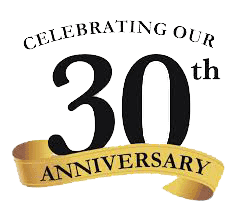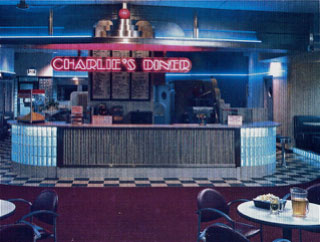
Vol. XIX, No. 1, January 2019
- Editor's corner
- Celebrating our 30th anniversary
- Current projects
- National survey of CLV & FEC participation
- The generations defined for 2019
- 30 trends & market forces impacting the future of location-based entertainment
- Who spends the most time and money at restaurants?
- Does your brand have purpose? It should
- Miniature golf returns to its roots
- 8 ways that Gen Z moms differ from Millennial moms
- The future of out-of-home entertainment - predictions of its future
- Miniature golf design for tomorrow - part 2
Celebrating our 30th anniversary

Our company was formed in the mid 1980s as a real estate consultancy. At that time, we specialized in evaluations of troubled/distressed commercial real estate projects and developing turn-around or financial workout strategies for them. This was the era of the real estate recession in the US brought on by overbuilding and Federal tax code revisions.
Then, in January 1989, an older bowling center, which one of our shopping center clients owned in Olathe, Kansas, burned to the ground. Our client asked us to oversee the redevelopment of the center.
The former 24-lane bowling center was rebuilt as a contemporary, 32-lane bowling center. Its design was based upon our market research and was guest-driven. It broke most paradigms of bowling center design at the time including:

- Elimination of settee seating and the use of comfortable cocktail style table seating to maximize bowler socialization, comfort and food and beverage sales,
- Completely level floors with no step down to the approach area from the concourse
- Bright light levels throughout
- Windows on the concourse
- Upscale nursery
- Upscale food service - Charlie's Diner
- Full thematic design using an art deco theme
- Hourly per lane charges rather than per game charges
- The concept of guest service, being a host, rather than customer service
When the bowling center reopened, its business immediately doubled although nothing else in the marketplace had changed. The center commanded premium rates, its per game food and beverage sales quadrupled and it won national awards for:
- Best new bowling center
- Best billiards area
- Best commercial restrooms
- Best lounge/eatery
We quickly came to the conclusion that producing successful leisure projects for clients was much more fun and rewarding than meeting with bankers and explaining to them that the value of the real estate collateral for their mortgages was as low as 1/3 the mortgage's balance and basically getting kicked out of their offices. So, we held a strategic planning session and decided to move out of real estate consultancy business and full time into consulting, design and production of leisure projects.
The timing was perfect, as that was the beginning of the family entertainment center industry with the boom in the development of indoor facilities in the US.
Over the 30 years we worked for almost 600 clients, mostly start-up entrepreneurs, but also resorts, casinos, retail malls and farm-based businesses. The projects we've designed and produced range from 8,000 to 154,000 square feet and all have had long successful lives.

A whole lot has changed since we first started in the industry. Back then the Internet had not gone mainstream, there were no smartphones, we didn't have high definition TVs, streaming and binging, social media didn't exist and the out-of-home entertainment options were rather limited.
Today it a very competitive landscape for peoples' entertainment spending and leisure time. We live in an age of rapid disruption as the pace of change accelerates. Community leisure venues (CLV), including FEC concepts from even a few years ago, are no longer sustainable. The bar to what it takes to get consumers to leave their homes is enormously higher. Now, when we plan a project for a client, we have to be up to date on trends, including emerging ones, to assure that we future-proof the project.
You'll find two articles in this issue that deal with future-proofing.
- Trends & market forces impacting the future of location-based entertainment
- The future of out-of-home entertainment – predictions of its future
Vol. XIX, No. 1, January 2019
- Editor's corner
- Celebrating our 30th anniversary
- Current projects
- National survey of CLV & FEC participation
- The generations defined for 2019
- 30 trends & market forces impacting the future of location-based entertainment
- Who spends the most time and money at restaurants?
- Does your brand have purpose? It should
- Miniature golf returns to its roots
- 8 ways that Gen Z moms differ from Millennial moms
- The future of out-of-home entertainment - predictions of its future
- Miniature golf design for tomorrow - part 2


